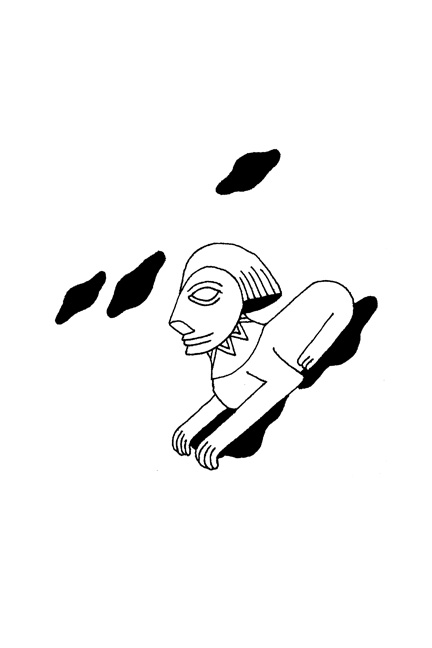The young man was the future Pharaoh Thothmos IV. 3,400 years ago he excavated and restored the Great Sphinx, which had been buried in drifting sands after more than 1,000 years of standing watch over the Egyptian tombs called the Great Pyramids. That’s right. The Great Sphinx is over 4,400 years old. Four thousand four hundred years this mythic masterpiece of human spirit has endured. Nowadays we call it a “marvel of human ingenuity,” but that is because we moderns are alien to awe and piety. For us the sacred is just an idea, it is not a value to live one’s life in accordance with. For us such a masterpiece is a marvel of human “ingenuity” and this is why we can’t comprehend its construction. It was not mere inventiveness that made this creature possible. The Great Sphinx could only have been made by a culture in whom the infinite and omnipotent power of spirit moved. A culture quickened and galvanized by a true mythic ethos. A culture for whom ethos was not merely a word, but a living power.
In our day we pride ourselves on having abolished slavery. But I wonder how much different the life of a slave then would have been to the life of a blue collar worker now? We trudge, zombie-like, to our miserable jobs every day searching desperately for any form of distraction to keep us from facing the abysmal truth of our pathetic and hopeless existence. The life of an Egyptian slave must have also been quite painful. But I wonder what it would have felt like to know that you were working on a monument that was truly powerful? A monument that was truly meaningful? A monument that was truly sublime? A monument that was truly awesome? They had to know. There was no escaping the monumentality of that job. If Egyptian slave, Abdul, met modern slave, Bill, what would they say? Abdul would point to an image of the Great Sphinx and say “I helped make that.” Bill would point to a toxin filled burger and say “I put that in a box.”

No comments:
Post a Comment